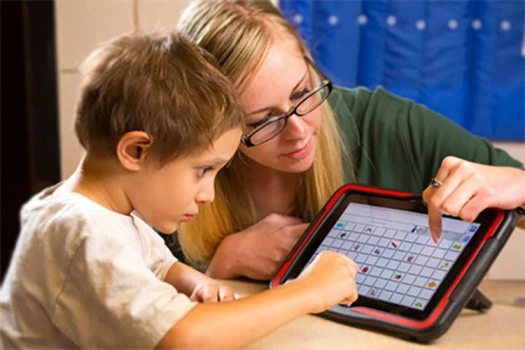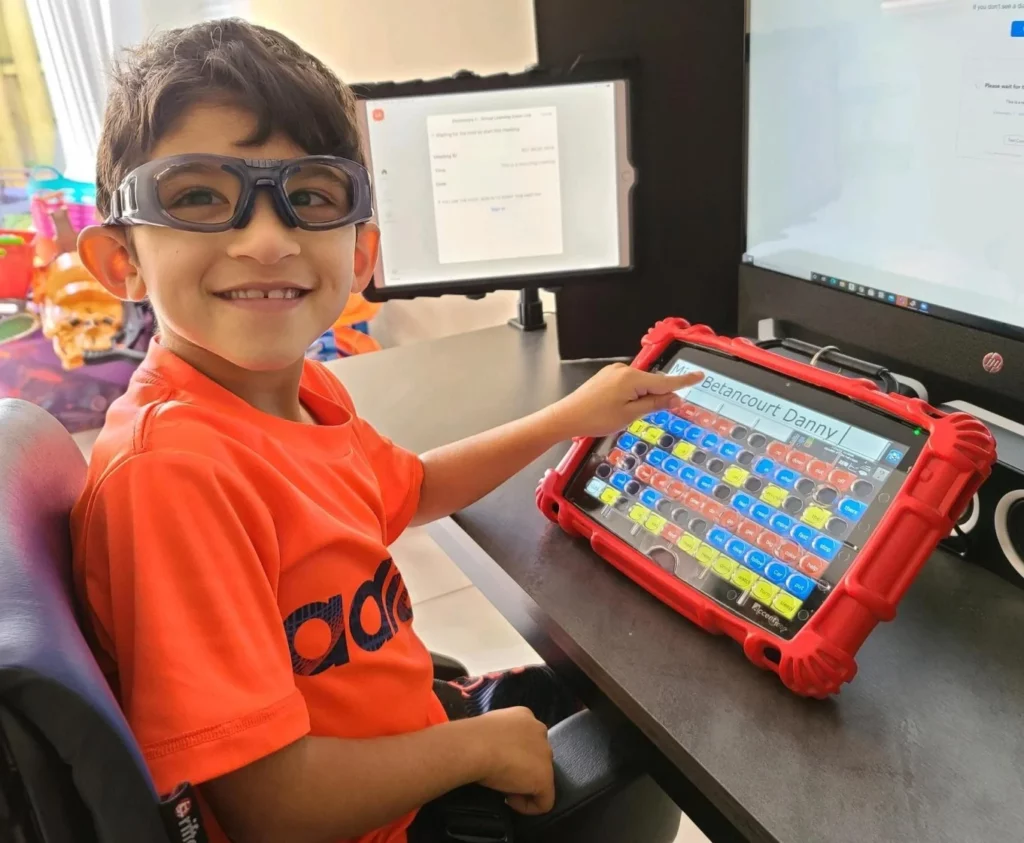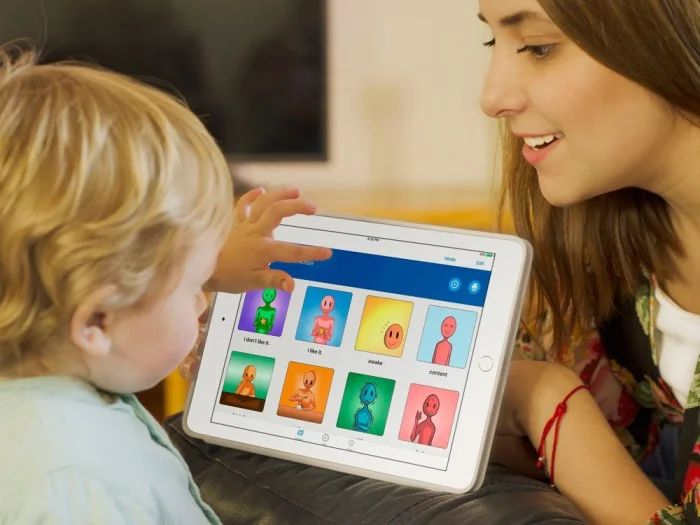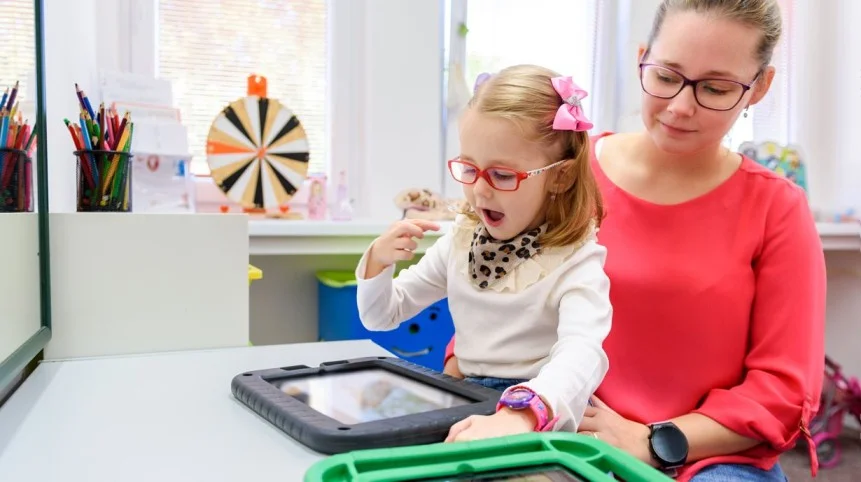Contents
In this article, we invite you to explore innovative solutions that can make a world of difference for children with special needs:
- Explore Innovative Solutions: Discover a wide range of assistive technology tools and devices specifically designed for children with special needs. Learn about the latest advancements and innovative solutions available to support their unique requirements.
- Empower Children’s Abilities: Gain insights into how assistive technology can empower children with special needs to enhance their abilities and achieve their full potential. Discover how these tools can provide them with new opportunities for communication, learning, and independence.
- Improve Quality of Life: Understand how assistive technology can significantly improve the quality of life for children with special needs. From enhancing mobility and accessibility to promoting social interaction and cognitive development, explore the transformative impact these tools can have on their overall well-being.

Experience the power of guidance and support as a therapist assists a child in navigating the effective use of an AAC device.
Many children with special needs face challenges in their daily lives that can hinder their development and independence. One significant hurdle is the limited access to appropriate assistive technology tools and devices that can cater to their specific needs.
As a result, these children may struggle with communication, mobility, learning, and social interaction. They may face barriers that prevent them from fully participating in educational and social activities, leading to feelings of frustration, isolation, and a potential decline in their overall well-being.
This blog post will provide valuable insights and solutions to address the challenges faced by children with special needs. By reading this post, the audience will gain the following:
- Discover a Range of Assistive Technology Tools: Learn about a variety of assistive technology tools and devices available for children with special needs. Understand how these tools can support different areas such as communication, mobility, sensory integration, and cognitive development.
- Understand the Benefits and Impact: Gain an understanding of the positive impact assistive technology can have on a child’s abilities and overall quality of life. Explore real-life examples and success stories that highlight the transformative power of these tools.
- Empowerment and Implementation Strategies: Acquire practical knowledge on how to choose, implement, and integrate assistive technology into a child’s daily routine. Learn about best practices, resources, and strategies for collaborating with professionals to maximize the benefits of assistive technology.
This blog post will equip the audience with a comprehensive understanding of assistive technology tools and devices for children with special needs, enabling them to make informed decisions and support the holistic development and well-being of these children.
Content Upgrade: Top AAC Devices for Children with Special Needs: A Comprehensive Guide

Discover the transformative power of AAC devices in enabling communication for children with special needs.
Specially for you, we found this amazing article about the Top AAC Devices for Children with Special Needs. This article showcases the most widely used Augmentative and Alternative Communication (AAC) devices, providing detailed information on their features, benefits, and user experiences.
You can access the article by clicking on the following link: 7 Popular AAC devices for autism and communication.
By exploring this comprehensive guide, you will gain a deeper understanding of the AAC devices available in the market and their suitability for different communication needs. This will complement the information provided in the next lines, allowing you to make well-informed decisions when considering AAC options for your child with special needs.
Assistive Technology Tools: Enhancing the Lives of Children with Special Needs

Witness the transformative impact of AAC devices during therapy sessions as a child expresses themselves with newfound communication abilities.
The Importance of Assistive Technology for Children with Special Needs
- Enhancing Communication and Expression: Assistive technology tools enable children with special needs to overcome communication barriers by providing alternative means of expression such as augmentative and alternative communication (AAC) devices or speech-generating devices. These tools empower children to communicate their thoughts, needs, and emotions effectively.
- Promoting Mobility and Independence: Assistive technology devices like mobility aids, wheelchairs, or walking aids can enhance children’s mobility and independence. By providing the necessary support and adaptations, these tools enable children to move freely and participate in various activities, improving their overall quality of life.
- Facilitating Learning and Academic Success: Assistive technology tools offer diverse solutions to support children with special needs in their educational journey. From text-to-speech software to assistive learning apps, these tools cater to individual learning styles, helping children access educational content, stay engaged, and achieve academic success.
- Enhancing Sensory Integration and Cognitive Development: Certain assistive technology tools focus on sensory integration and cognitive development. For example, sensory toys and devices help children with sensory processing difficulties regulate their senses, while interactive learning tools promote cognitive skills such as problem-solving, memory, and attention.
- Boosting Social Interaction and Inclusion: Assistive technology tools foster social interaction and inclusion by providing opportunities for children with special needs to connect with peers, engage in activities, and participate in social settings. Tools like social skills apps or assistive listening devices contribute to building social connections and reducing feelings of isolation.
Choosing the Right Assistive Technology Tools for Your Child

Experience the joy of a child embracing the world of sound with the help of a hearing aid device.
Factors to Consider When Selecting Assistive Technology Tools
- Assessing Individual Needs and Goals: Before choosing assistive technology tools, it’s crucial to assess your child’s specific needs, abilities, and goals. Consult with professionals and consider factors such as communication requirements, mobility challenges, learning preferences, and sensory needs.
- Exploring Available Options and Resources: Research the vast array of assistive technology tools available for children with special needs. Online directories, educational websites, and professional recommendations can help you discover tools tailored to your child’s unique requirements. Take advantage of demos, trials, or loaner programs to test the suitability of certain devices.
- Considering Compatibility and Adaptability: Ensure that the chosen assistive technology tools are compatible with your child’s existing devices or assistive aids. Additionally, consider the adaptability of the tools as your child’s needs may evolve over time. Look for customizable features or options for future upgrades to ensure long-term usability.
- Seeking Professional Guidance and Training: Collaborate with therapists, educators, and specialists who have experience with assistive technology. They can provide valuable insights, recommendations, and training on how to effectively integrate and maximize the benefits of the chosen tools in various settings.
- Monitoring Progress and Making Adjustments: Regularly assess your child’s progress and engagement with the assistive technology tools. Stay open to making adjustments or trying alternative solutions if certain tools do not yield the desired outcomes. Flexibility and ongoing evaluation are essential for ensuring the best fit for your child’s evolving needs.
Implementing Assistive Technology Tools for Optimal Support

Witness the incredible progress as a baby and therapist explore the possibilities of communication through an AAC device.
Strategies for Successful Implementation of Assistive Technology
- Setting Clear Goals and Individualized Plans: Establish clear goals for your child’s use of assistive technology and create an individualized plan. Define specific objectives for communication, mobility, learning, or social interaction, and tailor the use of tools to address these goals effectively.
- Collaborating with Educators and Therapists: Involve educators, therapists, and other professionals in the implementation process. Foster open communication and collaboration to ensure consistency across home, school, and therapy settings. Share insights, progress, and challenges to develop a holistic support system for your child.
- Creating a Supportive Environment: Create an environment that encourages the use of assistive technology tools. Make necessary adjustments to physical spaces, establish routines, and provide ongoing support to help your child integrate the tools seamlessly into their daily life.
- Encouraging Independence and Self-Advocacy: Empower your child to take ownership of their assistive technology use. Encourage them to learn and explore the tools independently, fostering self-advocacy skills. Gradually shift responsibility to the child while providing necessary guidance and support along the way.
- Regular Evaluation and Troubleshooting: Continuously evaluate the effectiveness of assistive technology tools for your child. Monitor their progress, identify any challenges or barriers, and troubleshoot accordingly. Seek professional guidance if issues arise, as experts can provide valuable insights and solutions.

Witness the bond between a little girl and her mom as they utilize an AAC device to enhance communication and connection.
In conclusion, this post has highlighted the importance of assistive technology tools and devices for children with special needs. We explored several key points throughout the article:
- Firstly, assistive technology tools enhance communication and expression, promote mobility and independence, facilitate learning and academic success, support sensory integration and cognitive development, and boost social interaction and inclusion.
- Secondly, when selecting assistive technology tools, it is crucial to consider individual needs and goals, explore available options and resources, ensure compatibility and adaptability, seek professional guidance and training, and monitor progress for necessary adjustments.
- Lastly, successful implementation of assistive technology involves setting clear goals and individualized plans, collaborating with educators and therapists, creating a supportive environment, encouraging independence and self-advocacy, and regularly evaluating and troubleshooting.
By the end of this post, you should have gained a comprehensive understanding of the benefits and impact of assistive technology tools for children with special needs. You should have learned how to choose the right tools, implement them effectively, and support your child’s development and well-being. Armed with this knowledge, you can now make informed decisions and provide optimal support to help children thrive and overcome the challenges they may face.
In addition to the valuable insights shared in this article, if you’re interested in exploring the transformative power of art therapy for children with special needs, we invite you to check out our in-depth guide on “Art Therapy: Unlocking Creative Expression for Children with Special Needs.” This comprehensive resource delves into the therapeutic benefits of art, the role of creative expression in promoting emotional well-being, and practical tips for incorporating art therapy into your child’s life.